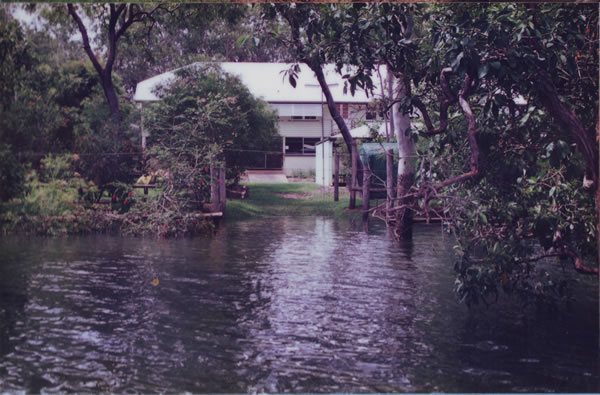


Why is water so important?
Water is the life blood of the earth. The rivers and creeks are the veins and arteries of the earth. If the water is polluted or unhealthy then that is an indication that the surrounding area of land is also unhealthy.
Water is a valuable and limited resource. We need to conserve it and preserve its quality.
One of the pre-visit activities involves answering some questions about water. Scroll down find the answers.
The first water supply for European settlement in Australia was the Tank Stream, which flowed into Sydney Cove. It was abandoned as a water source in 1826 because of problems with supply and pollution.
Our toilets use 23% of the total amount of water used in the average home. 20% of our water use is spent in the shower. 10% is used in the kitchen and 16% is used in the laundry.
In total, industry uses less water than homes, but large amounts of water are used for producing everyday items. For example, 200 litres of water for making a pair of pantihose; 600 litres for producing an average chicken egg; 1600 litres for producing an average steak; and 250,000 litres for producing the amount of steel in the average family car.
In the 1950's Australians consumed around 185 litres of water per day for domestic uses.
The largest catchment in Australia is the Murray Darling Basin. It extends through four states: Queensland, New South Wales, Victoria and South Australia; and the Australian Capital Territory.
Three major water attractions in Australia are World Heritage listed. These are Kakadu, the Great Barrier Reef and the Franklin River.
Water stored and released from reservoirs is measured in mega litres. A mega litre is a million litres and would fill a room which is 10 metres cubed.
The largest dam in Australia is the Gordon Dam in Tasmania. It holds 12.45 million mega litres of water.
The longest water supply pipeline in Australia is in Western Australia. It extends from Perth to Kalgoorlie.
Australia is the world's driest inhabited continent. 70% of our land is arid.
In the Aboriginal Dreamtime, the giant rainbow serpent emerged from beneath the earth and as she moved, winding from side to side, she forced her way through the soil and rocks, making the great rivers flow in her path.
The extinction of the giant water guzzling Diprotodont, the largest marsupial that ever lived, was hastened by the drying out of the Australian continent after the last ice-age.
The oldest dam in Australia is the Parramatta Lake Dam, built in Sydney in 1856. It is still in operation today.
In the average house, the greatest uses of water are used on outdoor activities.
Throughout Australia, approximately 15 million mega litres of water are used each year for irrigation purposes.
Today, the average daily consumption of water per head of population is 500 litres. This includes water used in homes, agriculture and industry.
More than two thirds of the Earth's surface is water, but less than 1% of the water on Earth is freshwater we can use. 97% is too salty, 2% is ice.
Filling an average in-ground swimming pool uses 50,000 litres.